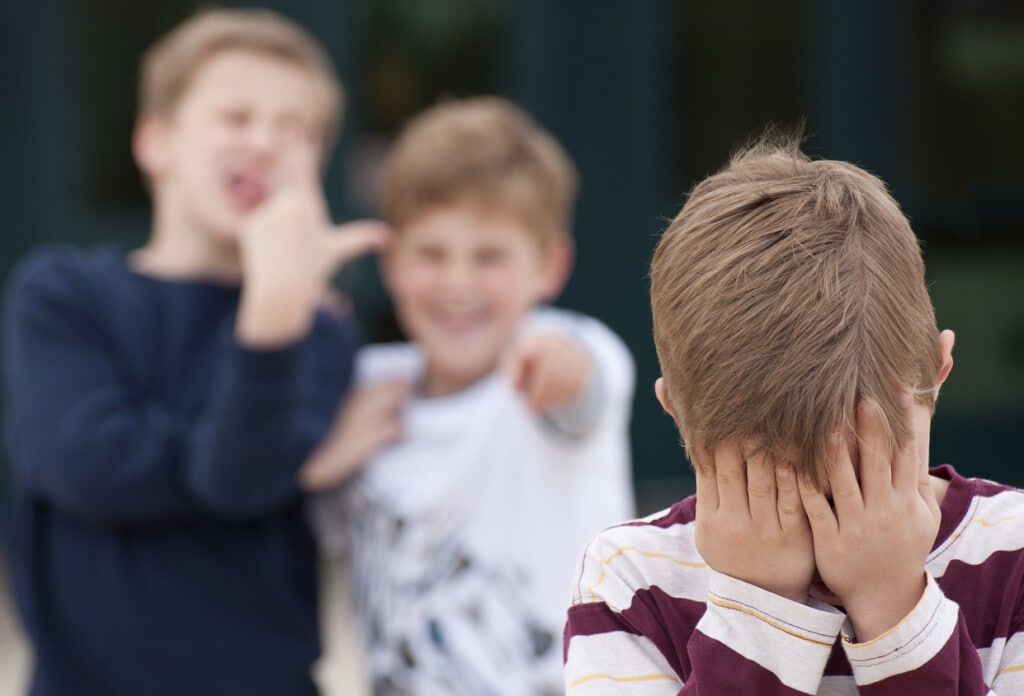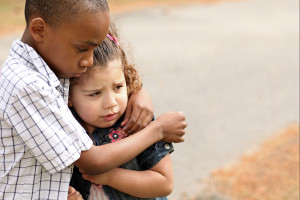I remember the first time my daughter came home from childcare and told me another child was teasing her. I went through a range of emotions; anger and irritation at this other child who made my little one feel “less than,” and sadness knowing it wouldn’t be the last time. How can I help my child handle teasing? How would I navigate this and future situations and give her the skills to be resilient and cope with such situations?
Unfortunately, teasing is incredibly common; it can happen anywhere and be hard to prevent. It can range from playful teasing, where everyone laughs, including the person at the center of the teasing, right up to hurtful teasing. This might include name-calling, put-downs, ridiculing or making fun of them, and anything that causes a person to feel hurt, angry, or sad.1,2
On the surface, teasing seems like a rite of passage because it’s so common. Kids tease other kids; even within families, there is often a bit of banter and gentle teasing. However, teasing can quickly escalate into bullying if children don’t know how to manage these situations.
Why Do Kids Tease?
Here are some reasons children may tease others:1,3
Imitation
Some children copy what they see at home or from their own experiences. They might see other kids doing it, have siblings who tease them, or even come from their parents.
Attention
Have you ever heard the phrase “any attention is good attention”? For many children, teasing is a strategy they use to get attention from their peers or the grownups around them.
Acceptance
Many children engage in teasing to fit in. In early childhood, right up to the teen years (and even beyond), children learn where they fit in socially. They want to join the “in group” or feel connected to their peers. So, if they see their peers teasing someone, they might copy them and get in on the action to fit in.
Avoidance
Also, children might see peers teasing, and they might join in to avoid being teased themselves.
Self-Esteem and Power
Many children who tease feel powerful, which can help boost their self-esteem and sense of superiority.
Seeing Difference
It’s normal for children to notice differences in how others look or act differently to them. However, managing their reaction and response to differences takes time and practice. Unfortunately, they may resort to teasing as a way of processing or responding to people around them who are different than they are.
Language Development
Early childhood is a time of massive growth and development in language. Children learn new words and learn that certain words or phrases get more attention and carry more weight. So teasing is sometimes a way of practicing and learning how their words impact people around them.4
How to Help Your Child Handle Teasing
First, acknowledge what this brings up emotionally for you. Perhaps you have a history of being teased or bullied, which might be triggering. Or maybe it brought out the mama (or papa) bear in you. No matter what, you must have some strategies of your own before you support your child, so consider:1
- Making sure you don’t overreact. When you overreact, it can prime or influence how your child responds.
- Focus on affirmations of resilience. Ensure your child knows you are there to support them, but also that they can cope and manage things. Instill confidence in them.
- Listen without judgment. Suspend that mama bear for a moment, and just be present and engaged with your child. Ask them for details; who is teasing, where is it happening, how do they feel about it, and how have they responded so far?
Skills to Help Your Child Handle Teasing
Equipping your child with skills to manage the situation is also essential. When children realize that certain strategies are effective when being teased, they feel better able to cope. Here are some strategies that will empower children and increase their resilience.5,6
1. Encourage Them to Choose Friends Who Value Them
Encourage them to spend time with children who want to spend time with them or who show kindness. We need them to see value in themselves and to choose people who also see this value. They sometimes need encouragement and support to make different choices about who they want to be friends with.
2. Tell Them to Try to Ignore It
Remember that sometimes kids tease because they get attention? If we teach our kids to ignore it, the person teasing them won’t get the response they want and might be less likely to continue. It’s hard, but encourage them to pretend the person doesn’t exist, walk away somewhere safe or where there are safe and supportive people, and act as though the person hasn’t said a word. In the case of bullying or prolonged teasing, this is not likely to be effective and other strategies are more appropriate.
3. Promote Positive Self-Talk
So, someone said something mean. Sure, it’s unpleasant, but if your child feels confident and good about themselves, the message from the person teasing isn’t likely to affect them. Get them to think about whose opinion matters most to them, and actively focus on getting your child to understand and name the things that make them special and wonderful.
4. Reframe the Situation
Instead of getting upset about being teased for something like having glasses or braces, encourage your child to reframe what is being said. For example, if someone teases them for having a “metal mouth” or “train tracks,” they could respond, “Yes, I do have braces.” It’s a fact that they do have braces, but responding in such a way can be confusing and off-putting for the person teasing as they aren’t getting the reaction they were hoping for.
5. Ask for Help
To help your child handle teasing, ensure they know who a safe or supportive person is in the environment where it is happening. Sometimes it might be necessary for them to involve an adult to assist if the teasing is prolonged or escalating.
How to Teach Your Child About Teasing
We have looked at things from the perspective of the situation when your child is being teased, but it’s equally important to address things if they are teasing others. It might feel confronting for you but know that simple teasing (not bullying) is relatively normal in development, and they generally aren’t intentionally trying to be mean or hurtful. But that doesn’t mean we shouldn’t address things. You can address their actions by:
Looking Within
Is something happening in your own house that encourages this behavior? Do they have a sibling who teases them? What kind of TV shows are they watching? Or are you guilty at times of tormenting and teasing yourself? Even if it’s good-natured, understand that others outside your family dynamic might not understand or appreciate this. So, it might be time to change some of the interactions you or extended family and friends have with your child.
Considering What is Driving the Behavior
There are many reasons children tease. Spend some time exploring with your child the reasons they might be teasing. You will need to listen without judgment and show curiosity rather than being angry, frustrated, sad, or some other feeling, as they are likely to “clam up” rather than disclose anything for fear of judgment or punishment. When you figure out the “whys,” finding a solution or strategy to stop it is easier.
Building Their Sense of Empathy
Help them tap into empathy or understanding how others feel about something. They may be less inclined to do it again when they realize and genuinely acknowledge that their actions could hurt other people.
Most teasing is easily dealt with, particularly if you can help your child develop skills to handle the situation. However, if the teasing continues, is prolonged, or even escalates, it’s essential to deal with things differently, including involving other adults. But in the case of general teasing, try to help your child understand that while they can’t necessarily prevent teasing, they can manage how they react to it. They can also learn they are in control of their feelings and aren’t reliant on others to feel good about themselves. This is empowering and will go a long way toward protecting them from the impact of teasing.















